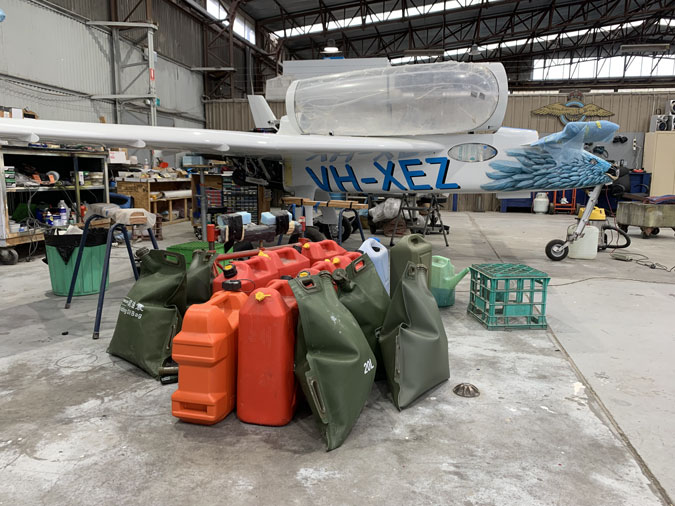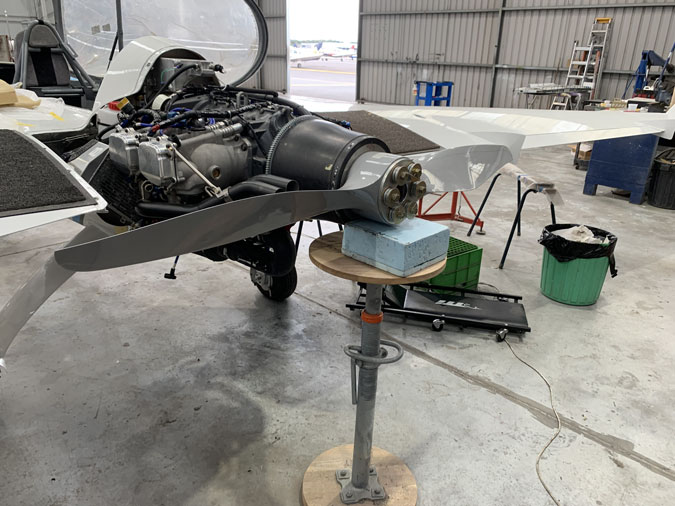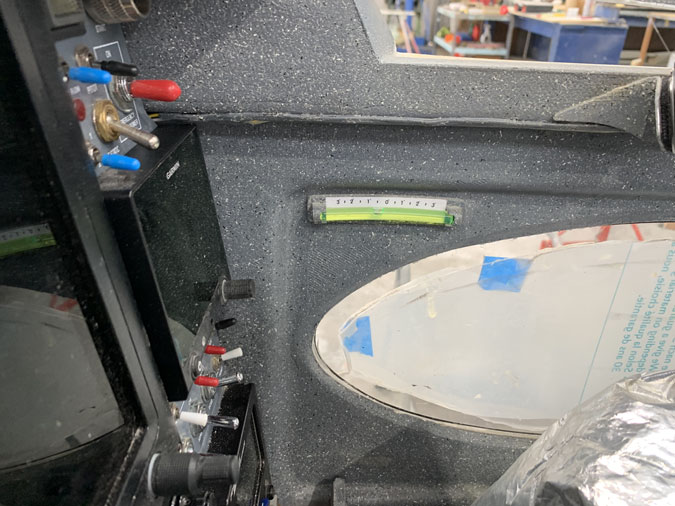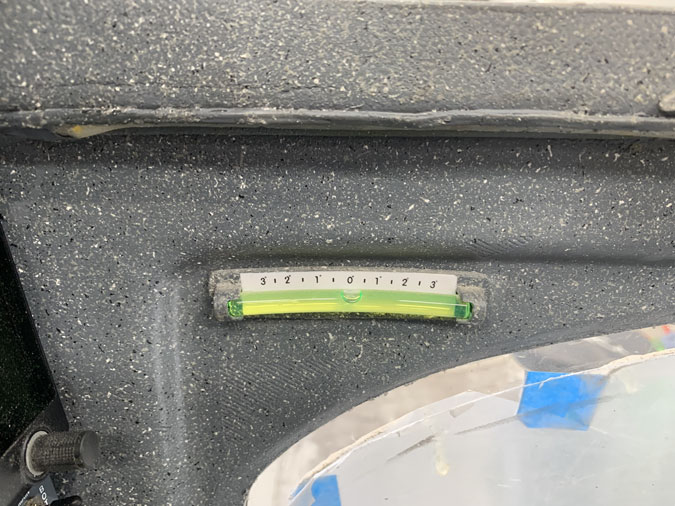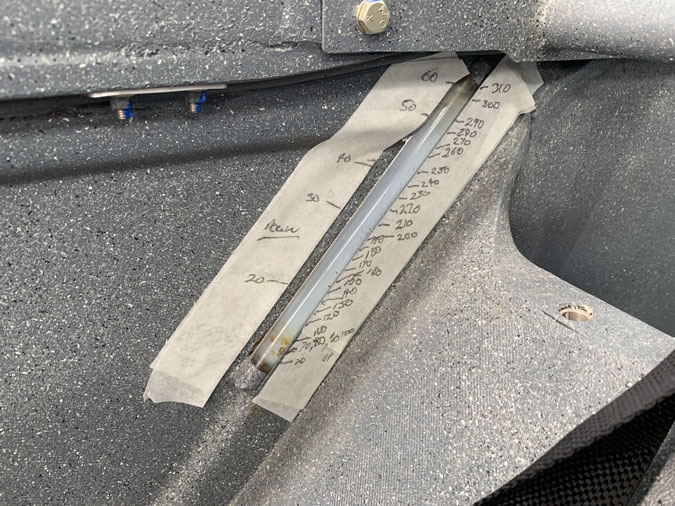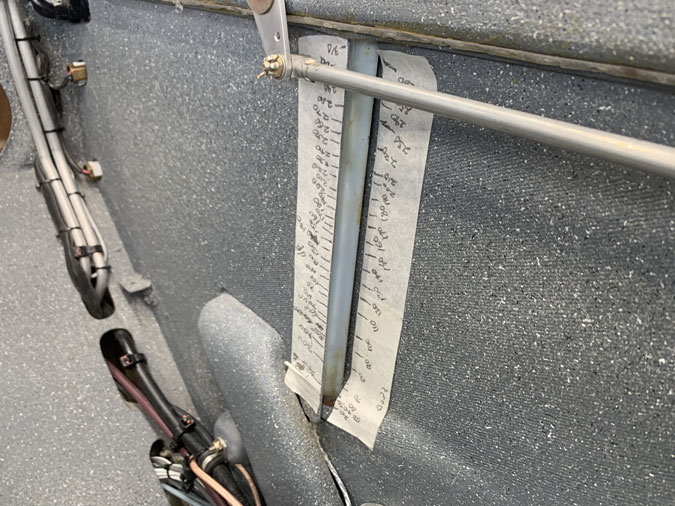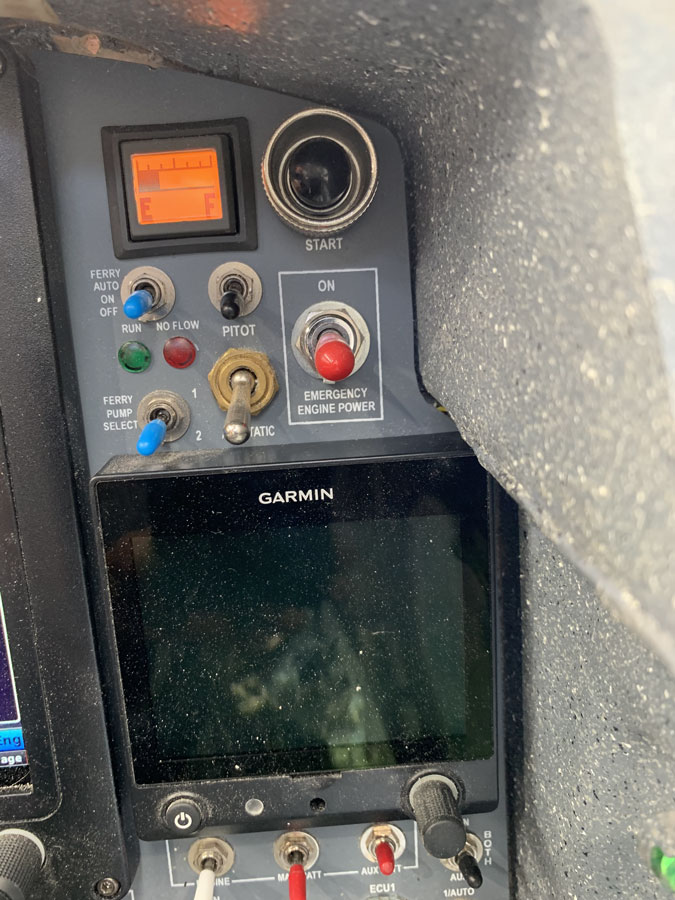| Date: 08-09-2024 | |
| Number of Hours: 18 | |
| Manual Reference: 21 |
The strakes on this plane have been modified to take more fuel, a lot more. The downside is that I had to give up very valuable baggage space. I still want both. I could have left a little bit, a pocket or two for lunch but that’s now way too late.
Many years ago now, I planned how much fuel I could fit in without making the cockpit baggage cutouts. I did this old school with graph paper and dots to count the squares! My ‘skills’ said I could fit 300 litres rather than the plans 200 litres. Then there is the common sump which I was thinking might be about 15 litres or so. Now was the time to find out if I had 315lts!
First up was getting that much fuel in bags or cans so I could slowly transfer it to the tanks. Not only do I need to know the maximum I can hold but I wanted to calibrate my forward and aft sight gauges.
I needed two readings per quantity. Nose up near flying angle would give me flight fuel and nose down would give me a guide when refilling on the ground with the nose down. Flying attitude might be nearer 2 degrees, but that’s not going to happen on the ground!
I soon found that even .4 degrees nose up had the plane tipping backwards onto my ‘safety catch stand’ once there was a bit of fuel onboard.
I get a good reference line of the longeron position in the cockpit.
You can see the level on the longeron here, I went with zero degrees as the difference is slight for fuel quantity and the airplane will not tip backwards without encouragement.
So zero degrees. We are good to go with what become a very long day and night. I put 5 litres poured into a calibration watering can’ (one that had marks on it) into each tank. Even though they cross feed I didn’t want to wait as I don’t know how long it would take for the various levels. Then I’d put a mark on each sight gauge tape. Next I’d lower the nose and do the front, nose down marks.
Front right side. Yes its a lot of marks! You can see how the nose down position isn’t much use after 60 litres.
Left side front. The gauges are full here.
Right side back. I bet you are wondering how am I going to read the graduations by turning around from the pilot seat in flight.
Left side gauge. Yeah, I don’t know yet how I’m going to size nice readable printed labels either! This day went well into the night, but I did get it done.
With the tanks absolutely full. I got 310 litres. Within 5 litres of my estimate years ago. Very smart or very lucky? I’ll leave that to you.
The next huge task was the calibrate my AG6 fuel gauges. First of all they didn’t work at all so. I had not plugged a lead in correctly, then the readings didn’t work. My very skilled avionics guy figured it out.
The gauge graduations go off voltages that come from these liquid sensors. It was set up for 12 volts not aircraft 14volts. We added a pull down resistor and that sorted it out.
Here is the full indication.
So called 3/4 is only about 20litres or so less.
So on it goes. While I put the sensors roughly equal distances apart they don’t reflect equal amounts of fuel remaining.
I will have to revisit the programming of the button gauge and set the graduations more appropriately.
I do know if I see this empty gauge or the Low Sump warning that follows I’ll have about 14 litres of fuel left and I should already be on the ground.
I do need to recheck these marking indicators in flight. Overall, I’ll be going by the cockpit sight gauge graduations and the fuel burn on the Garmin G3X/GTN750 which once calibrated should be super accurate.
A little ‘bonus’ is that with the tanks full of course the vent lines are covered. I get a very slow leak through them onto the ground. I found that tipping the plane nose down a little stopped the leak. Then later it started up again and kept slowly dripping until the temperature of the hangar dropped a few degrees, then it stopped again.
If I fill up overnight I need to have a catch bucket and watch the temperatures in the morning, or just fill before I go. I’m thinking if I need to be that full its going to be a long flight and an early start!


